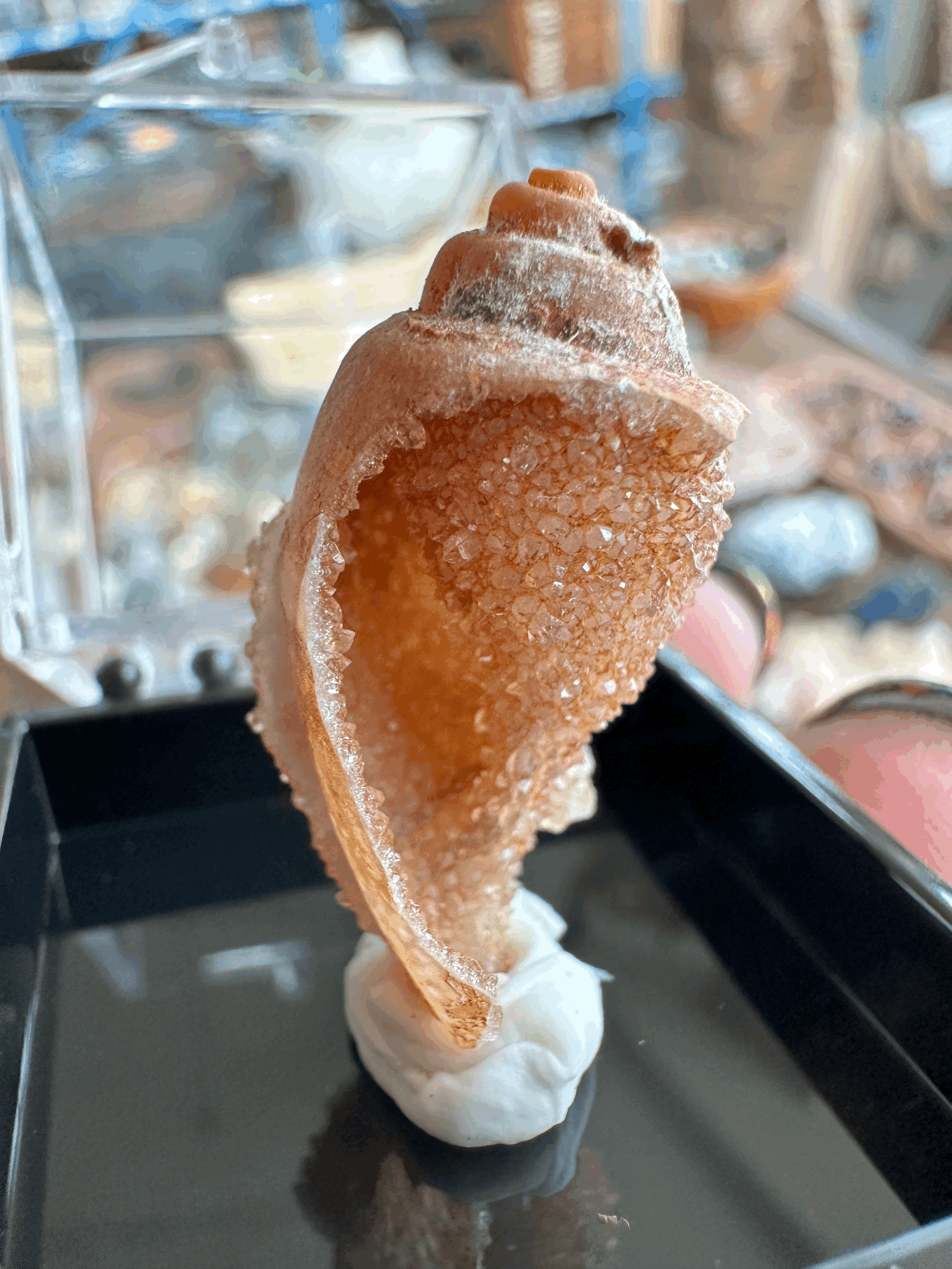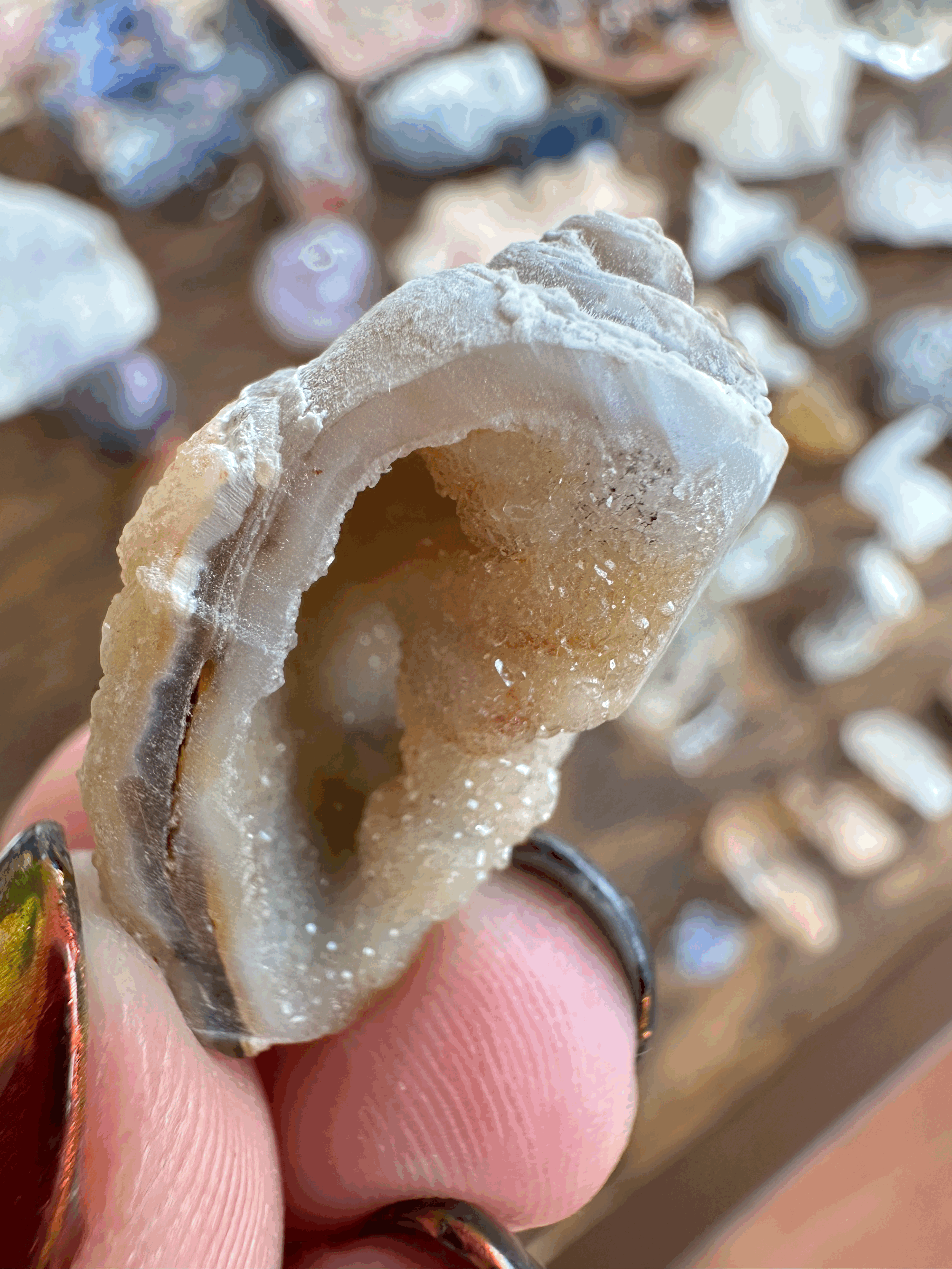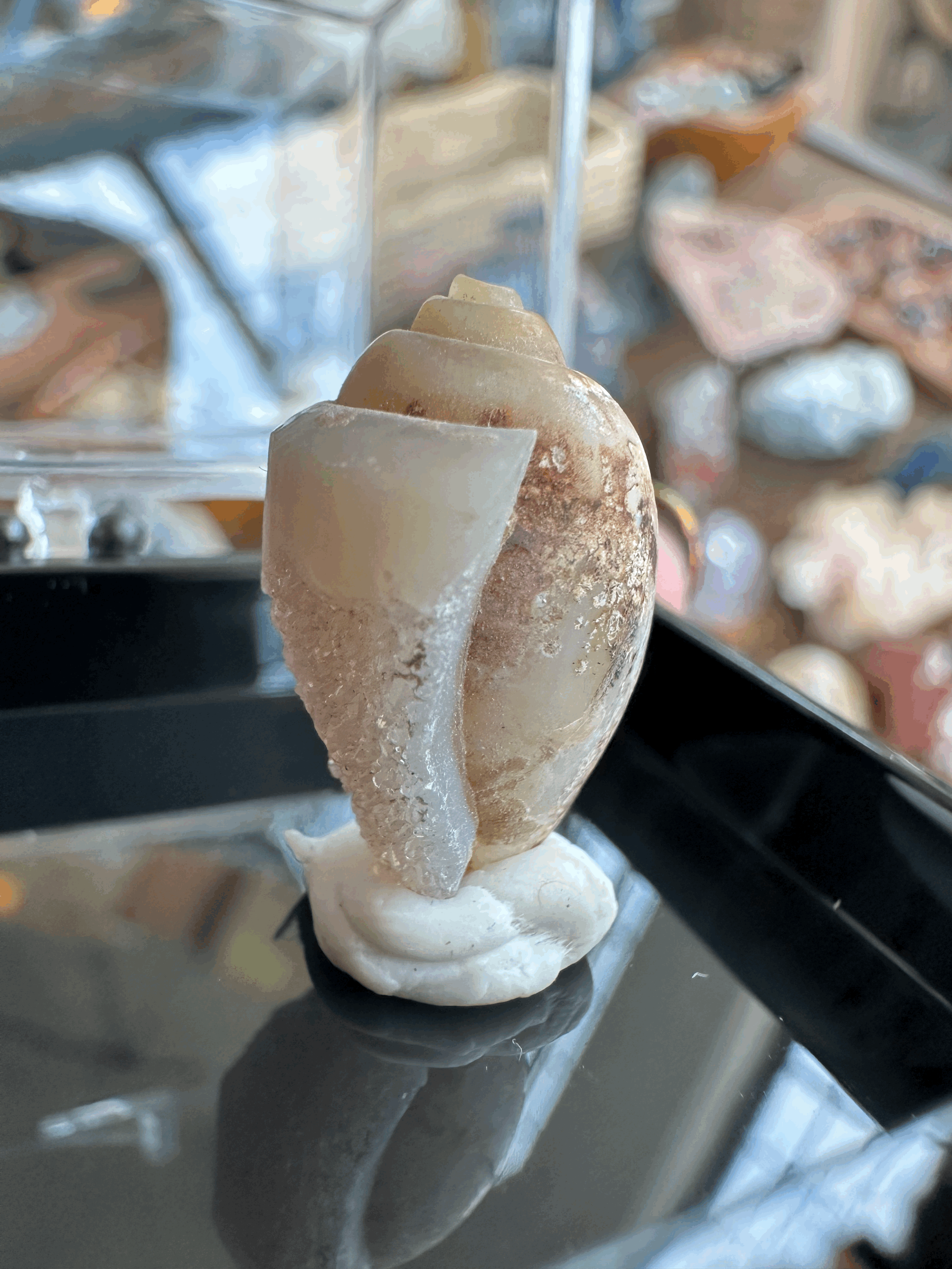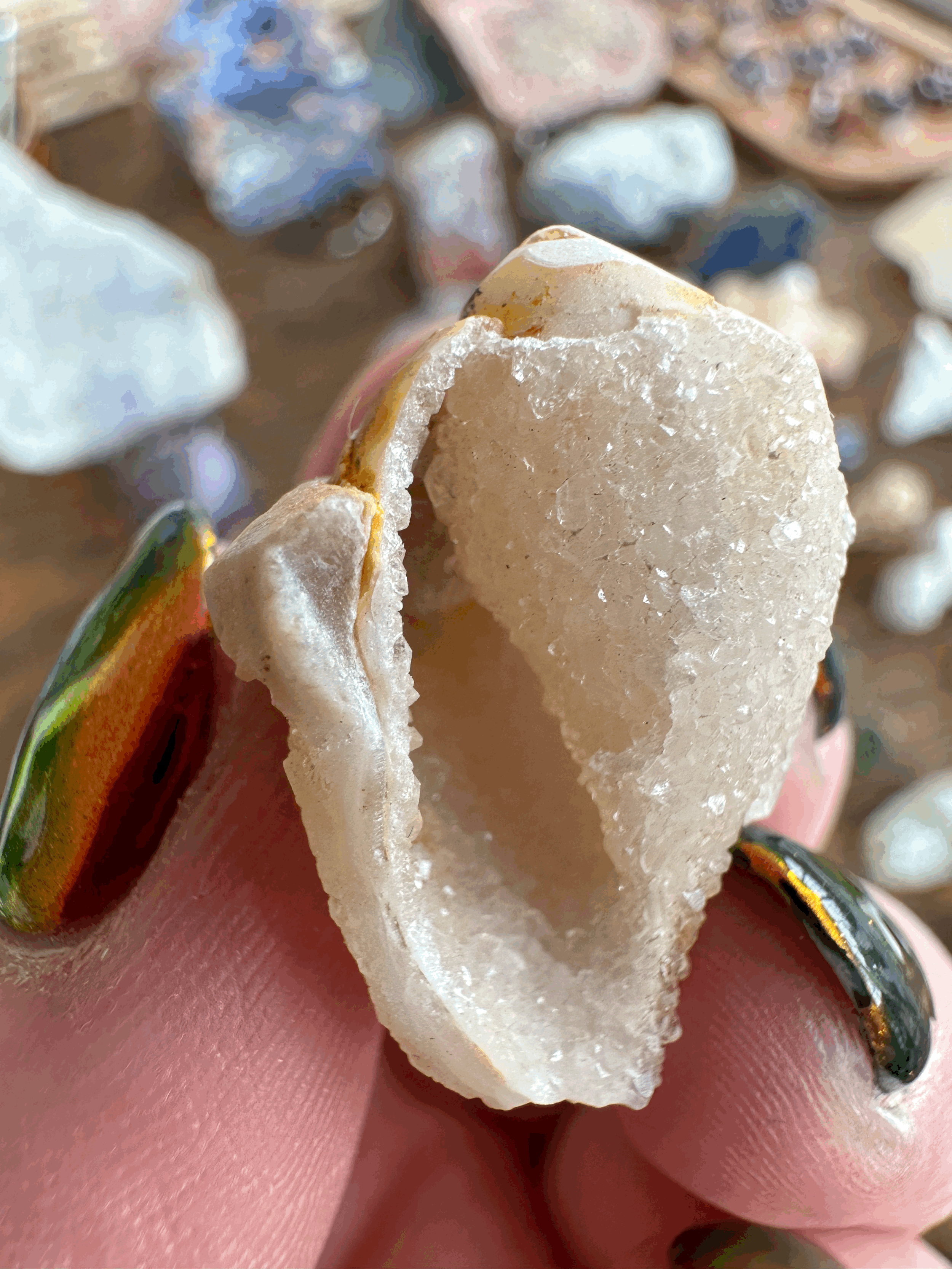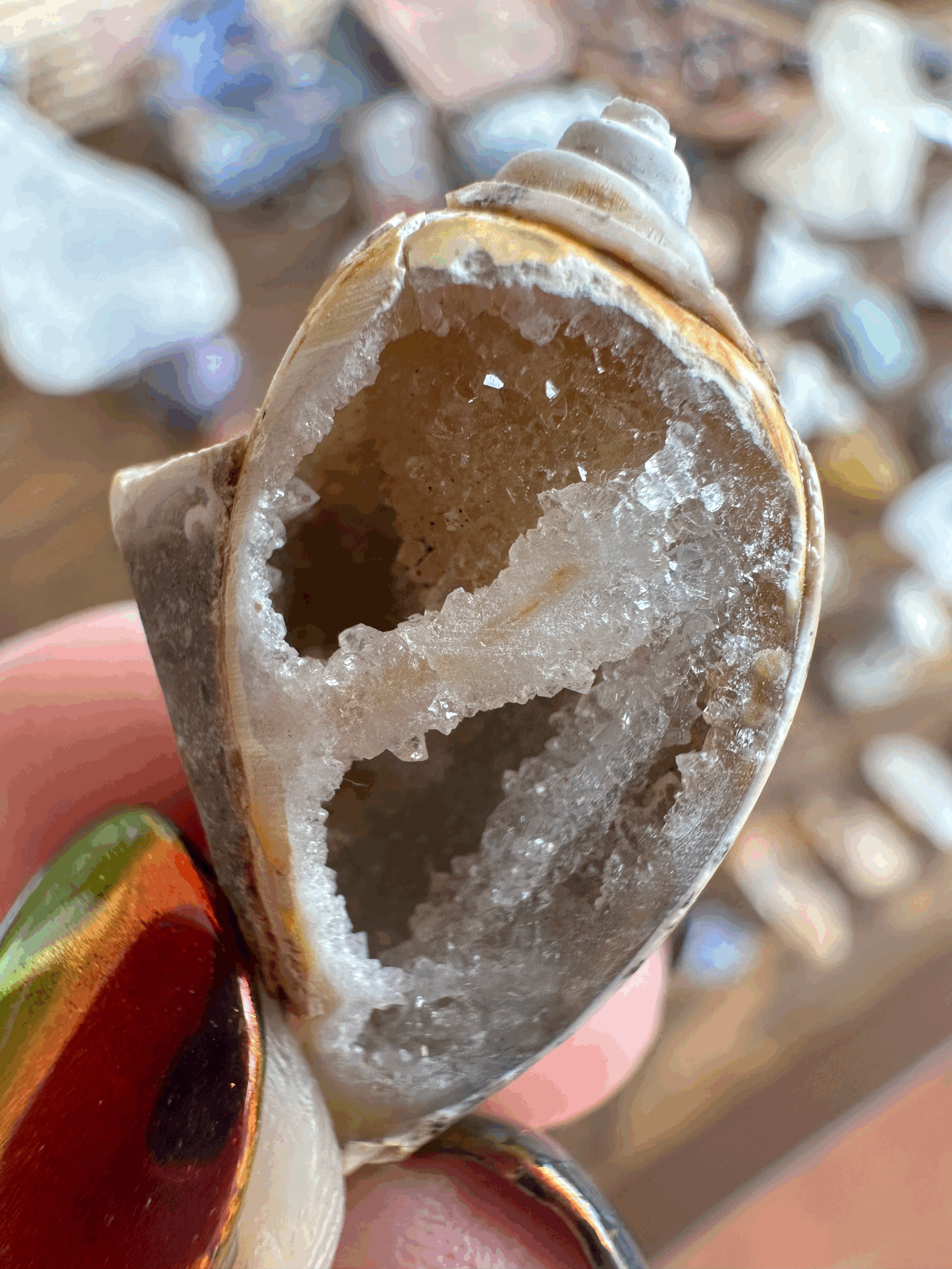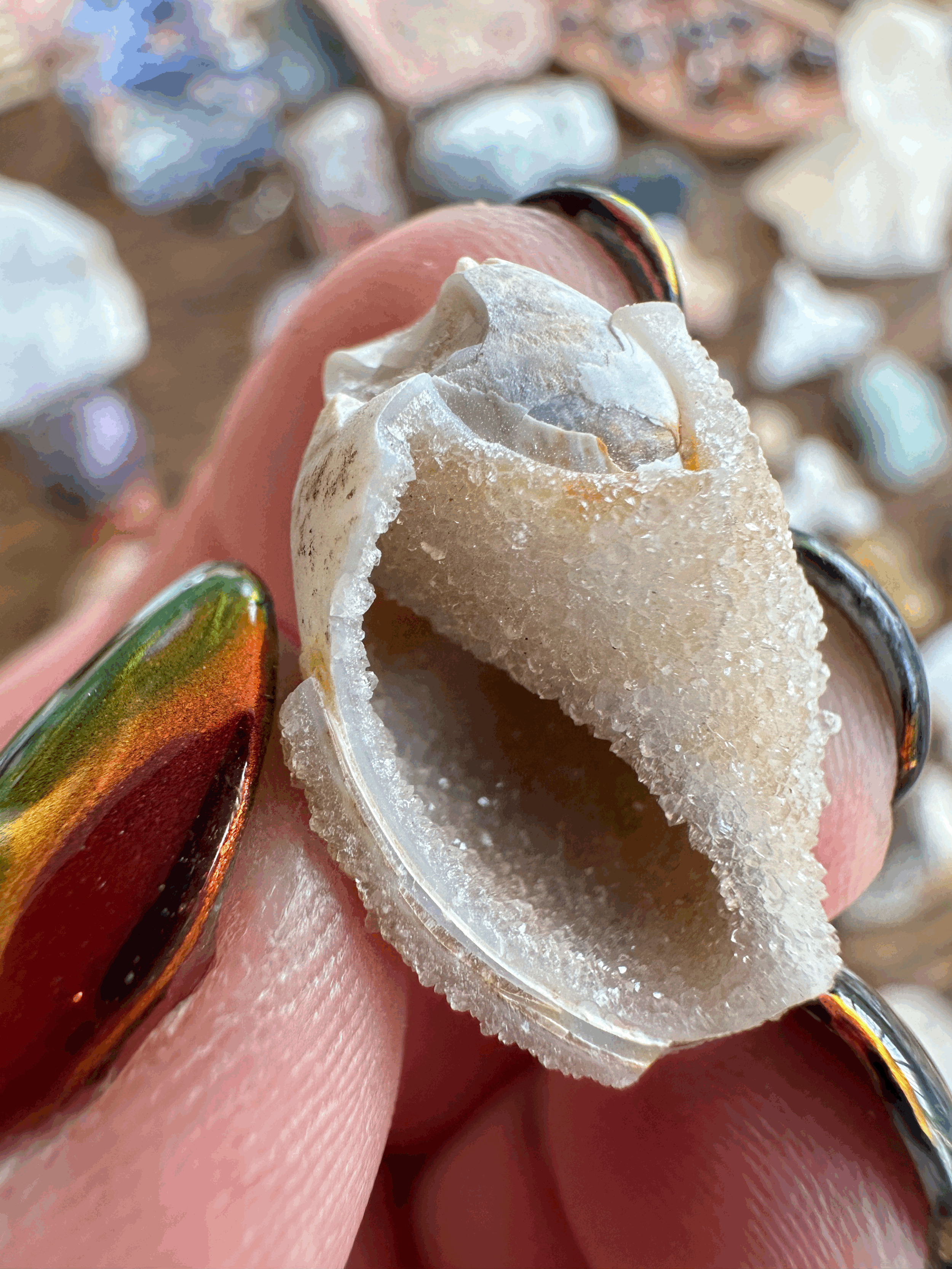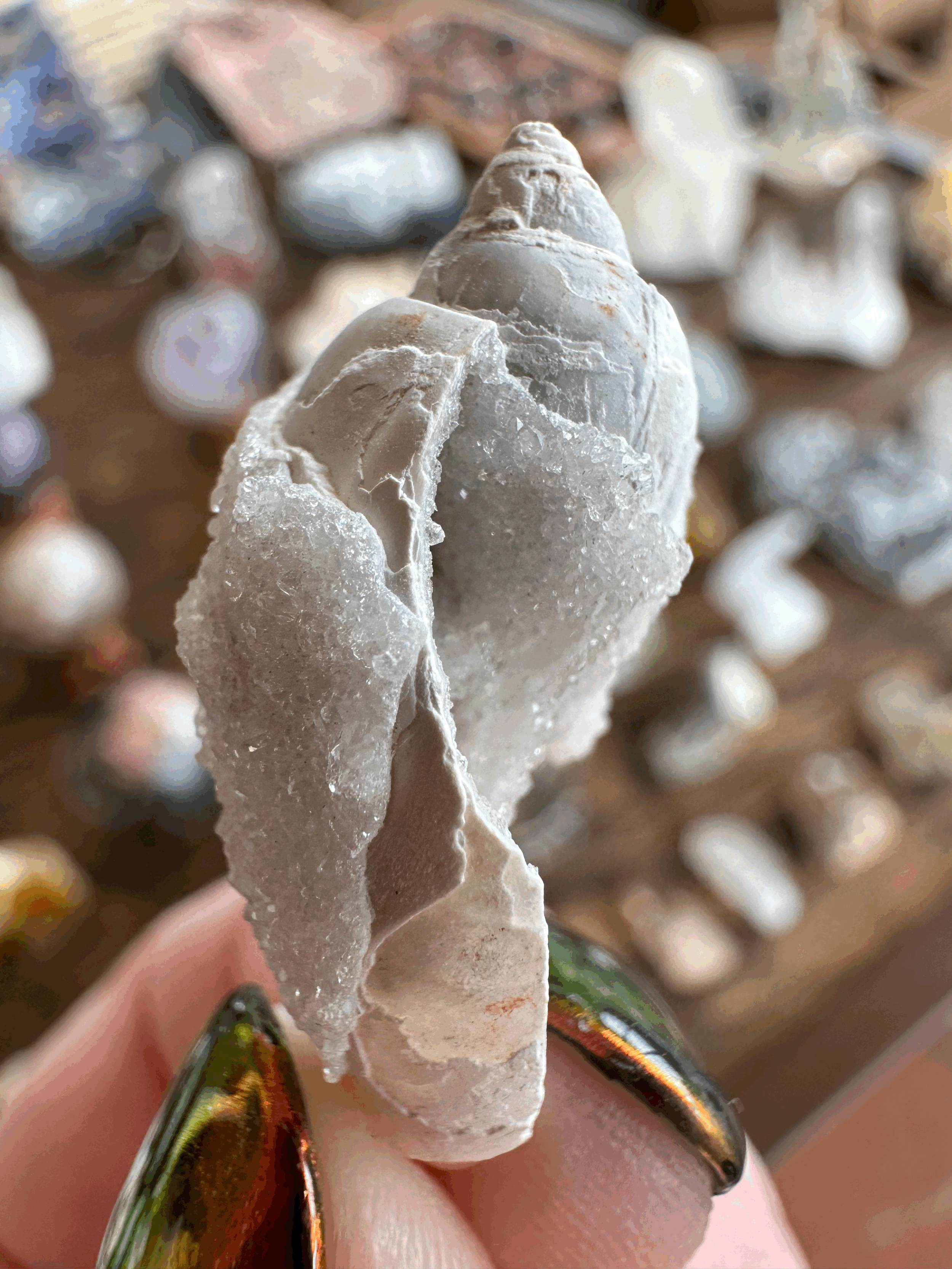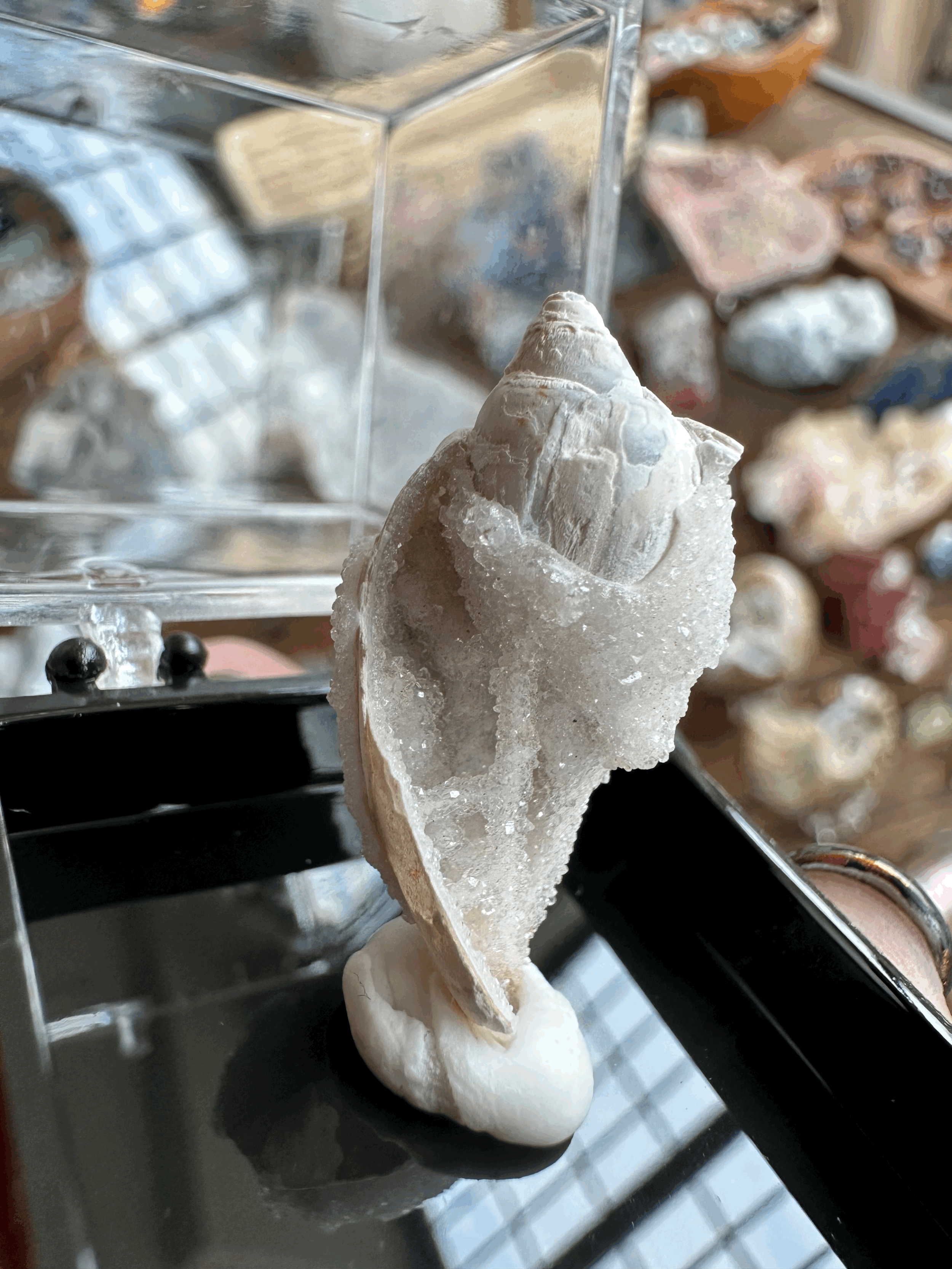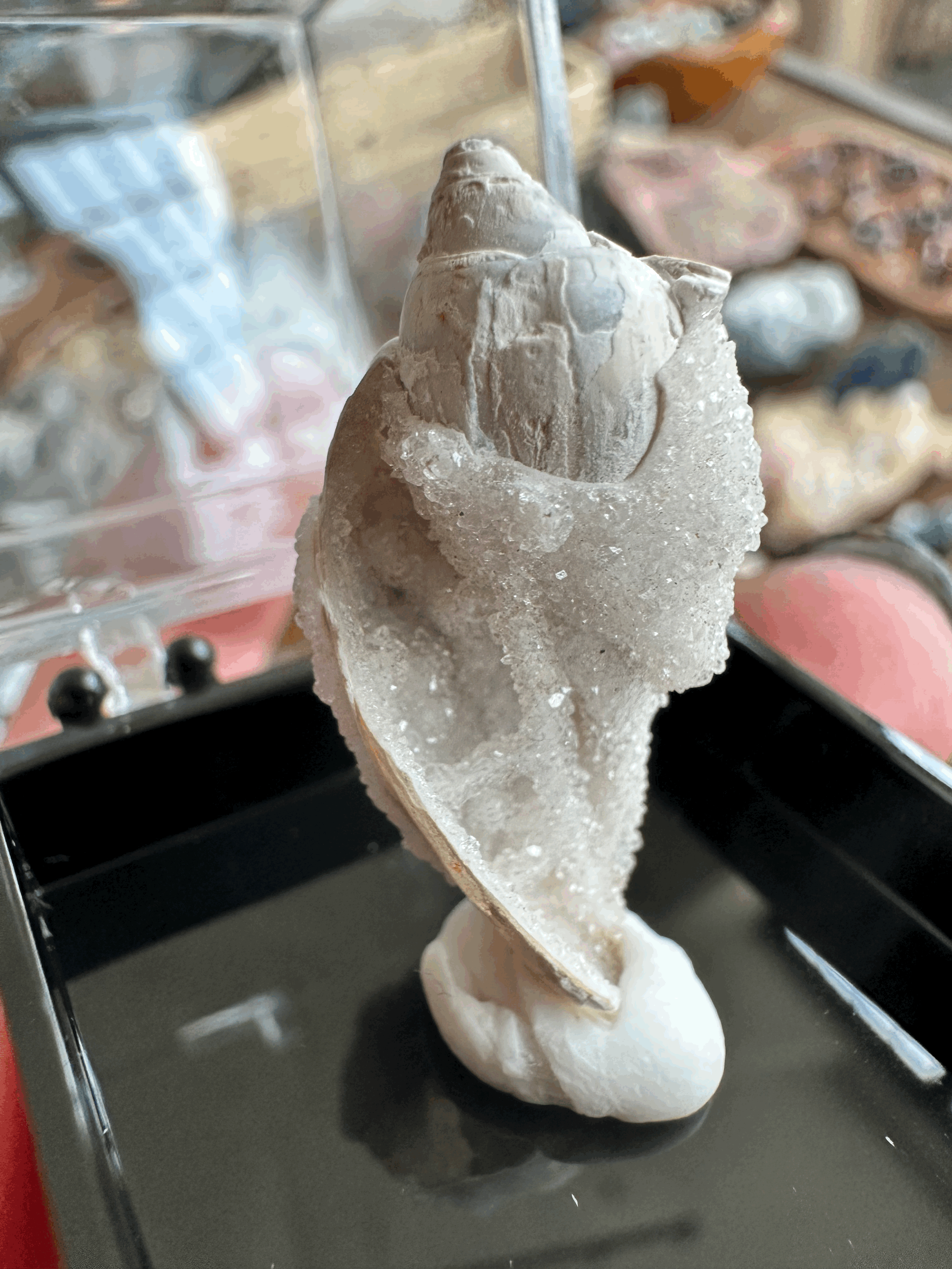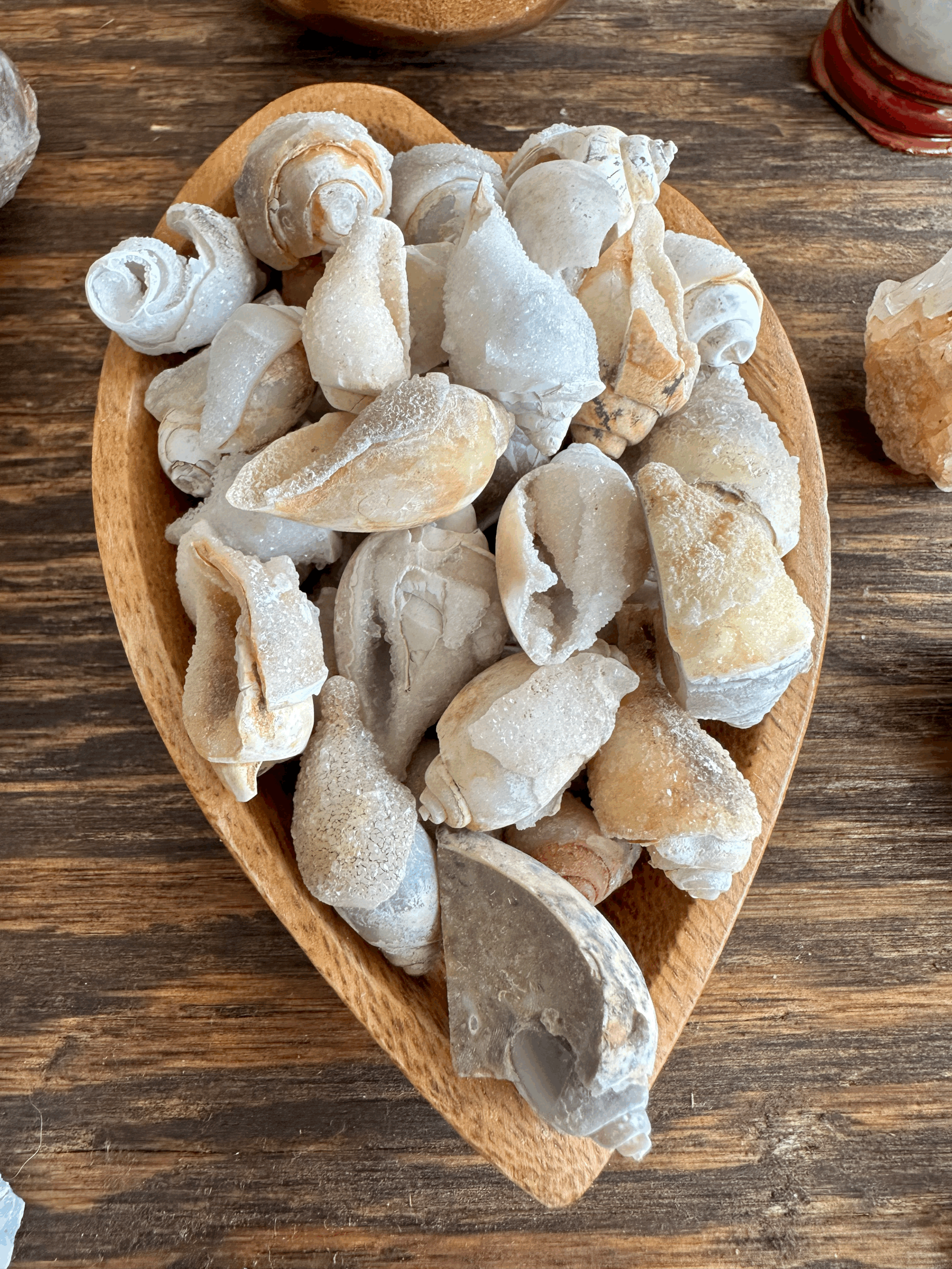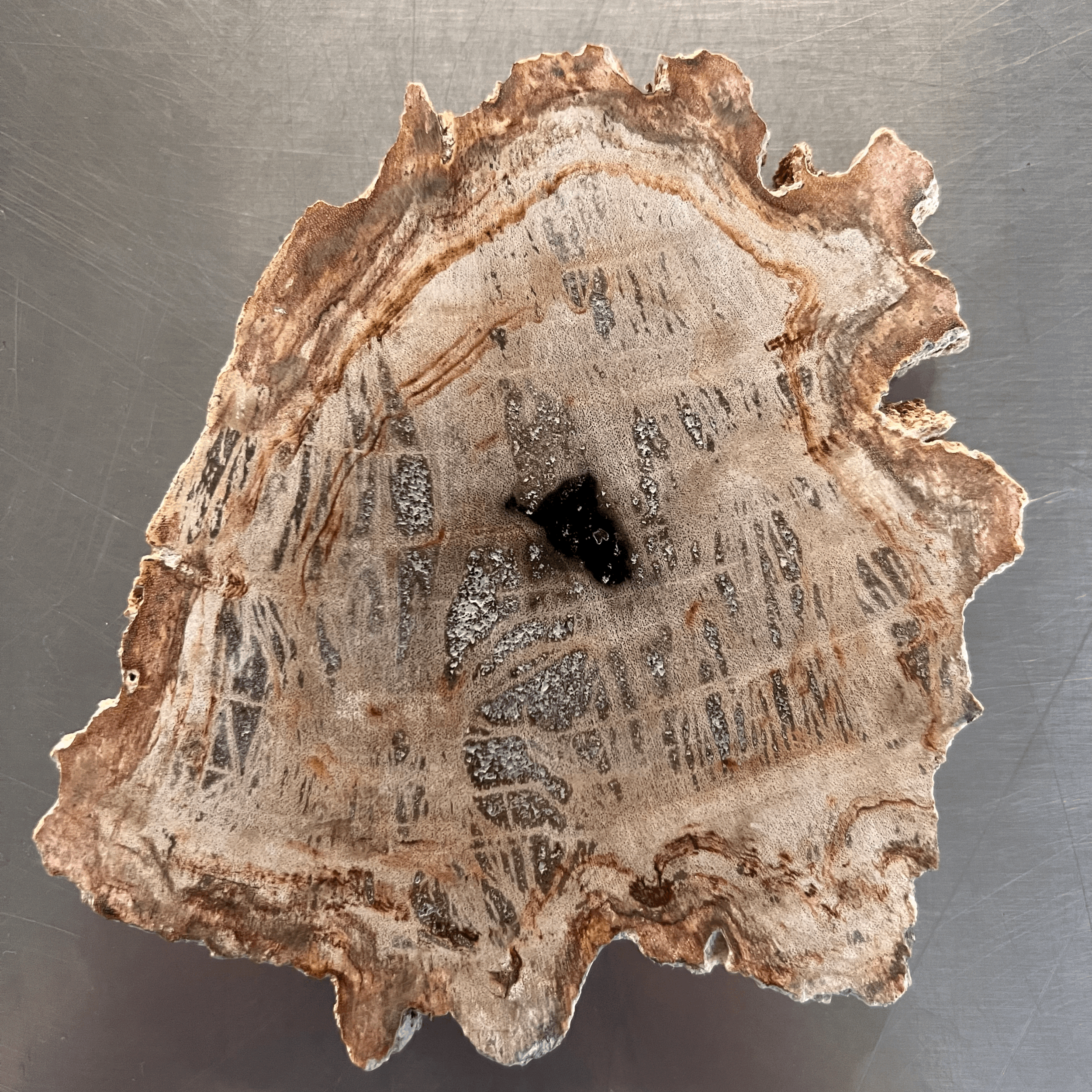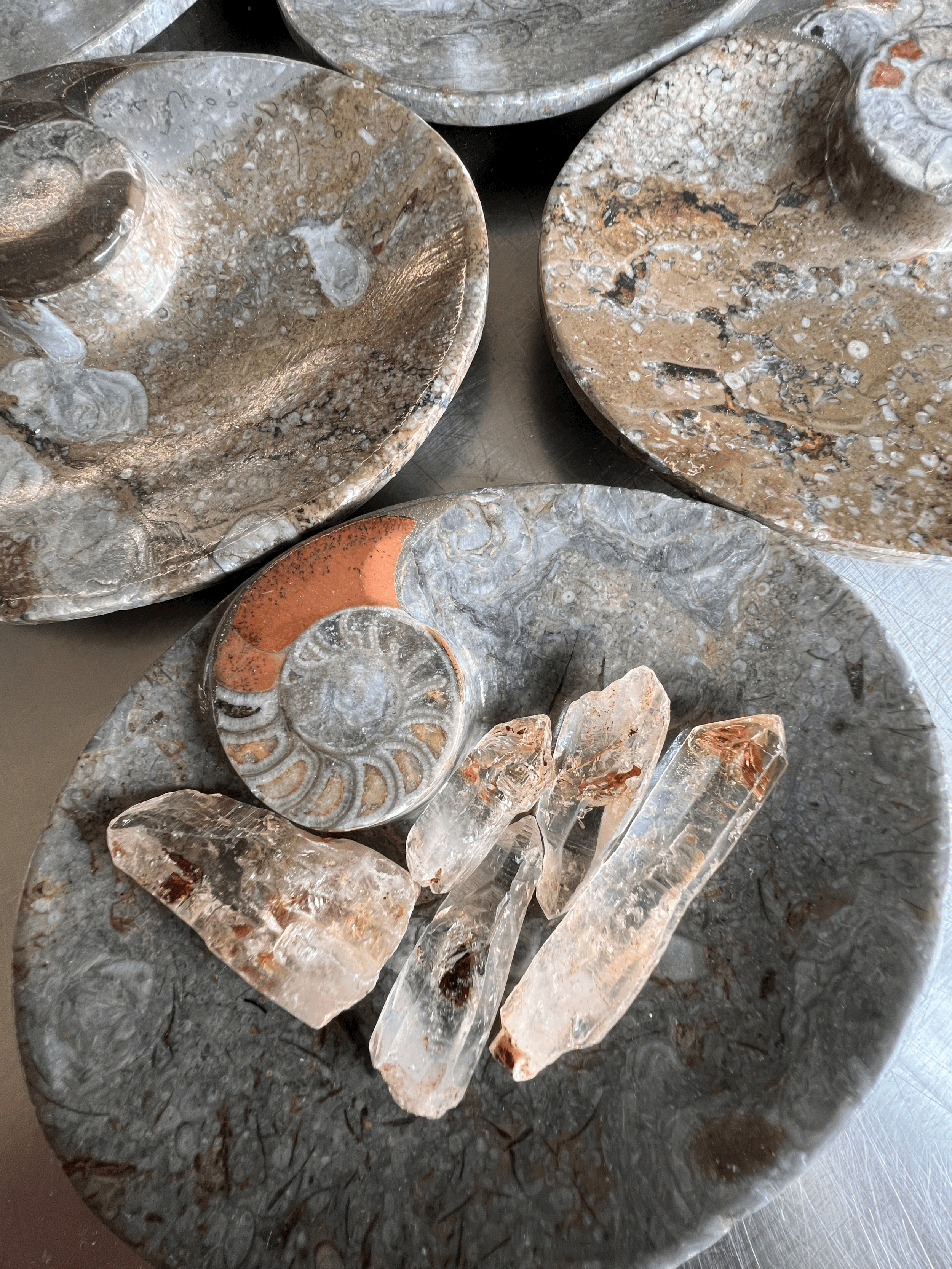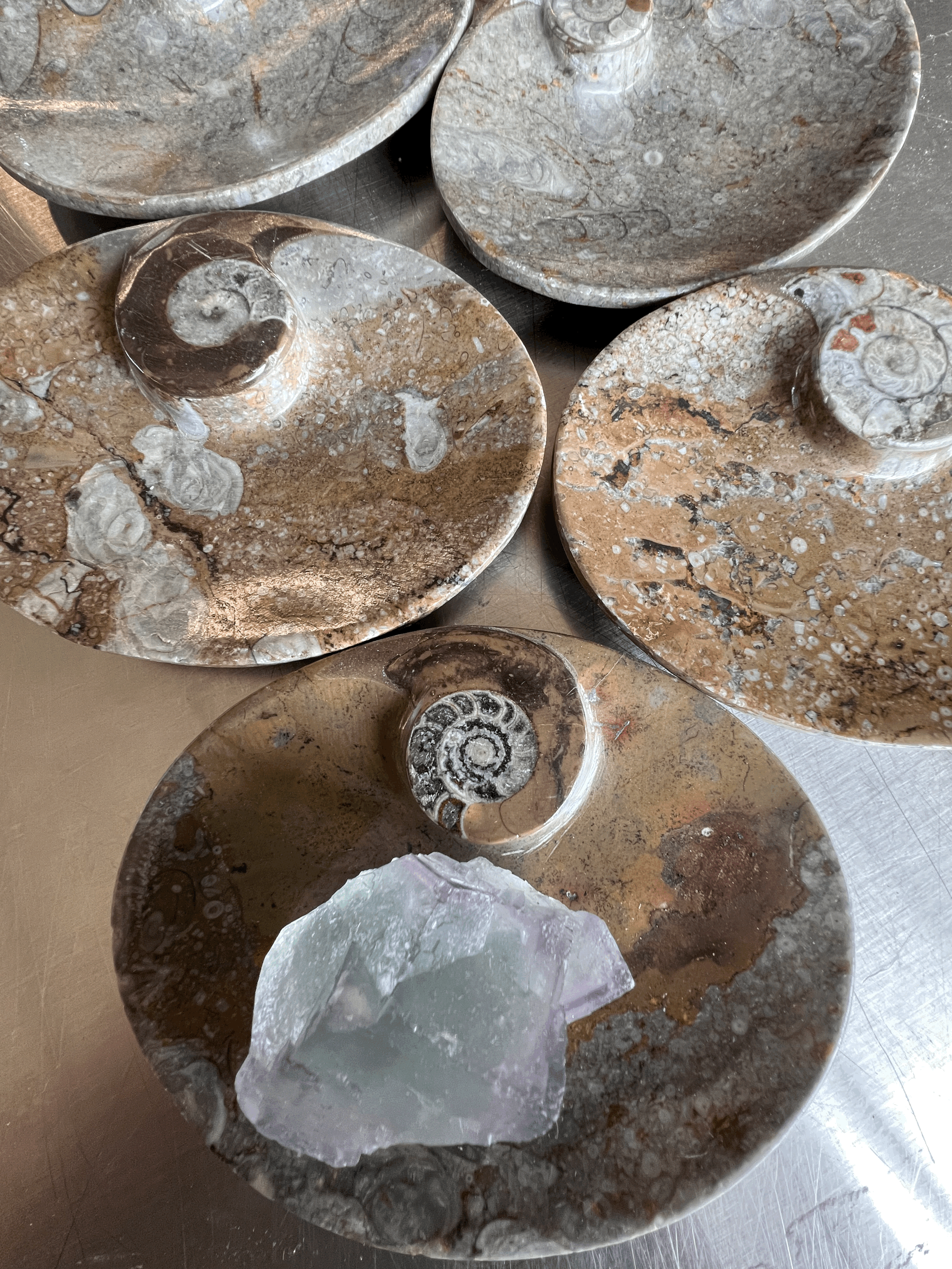

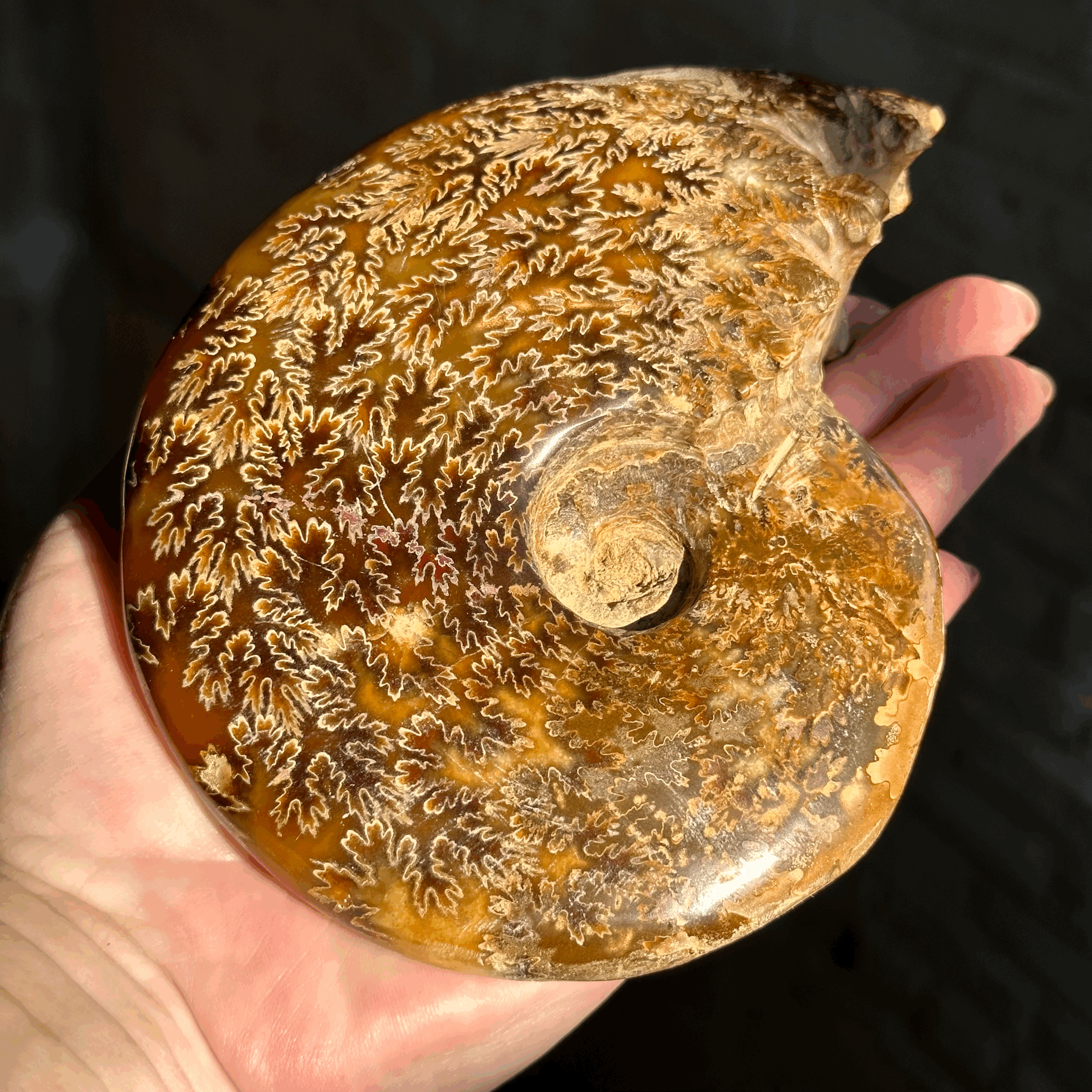

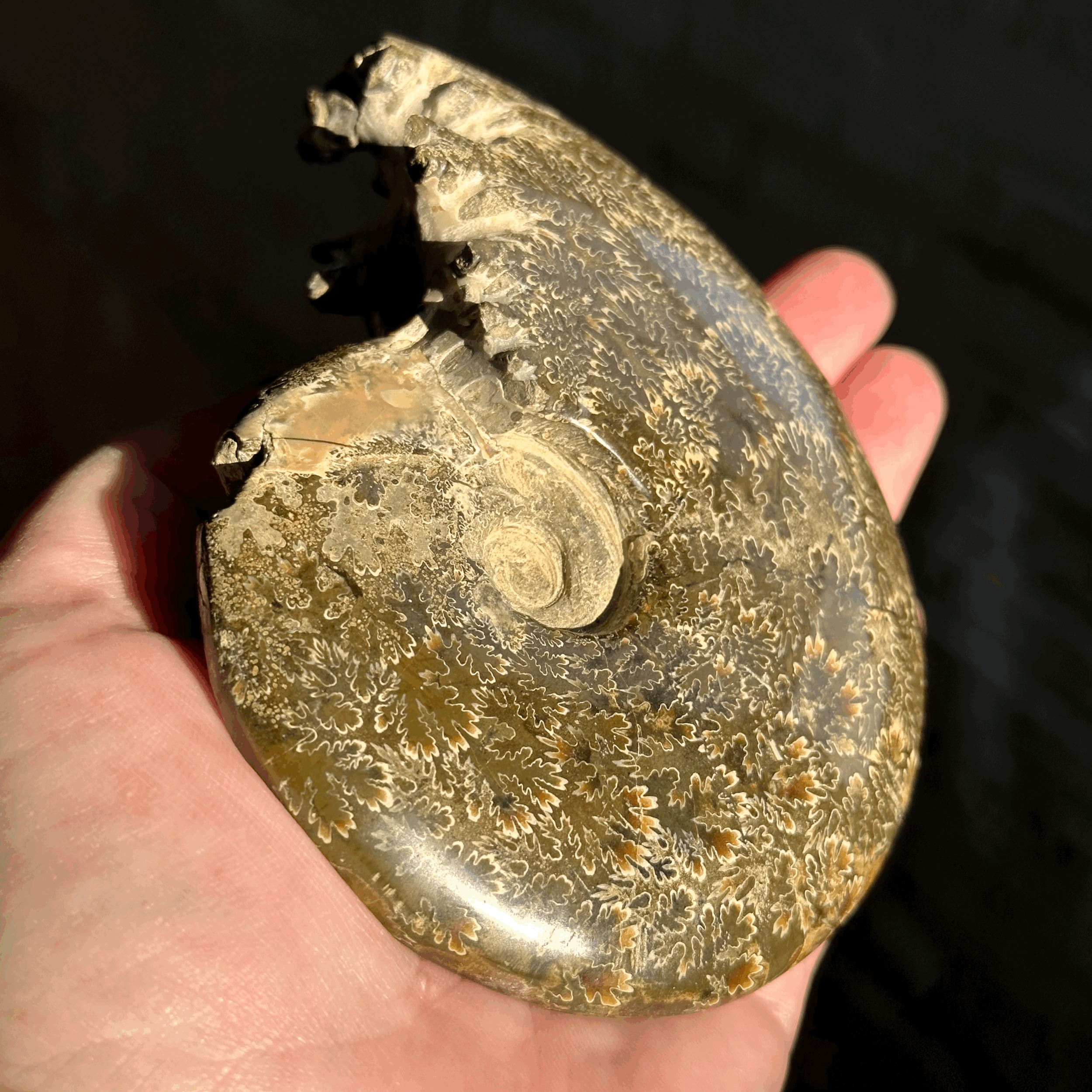
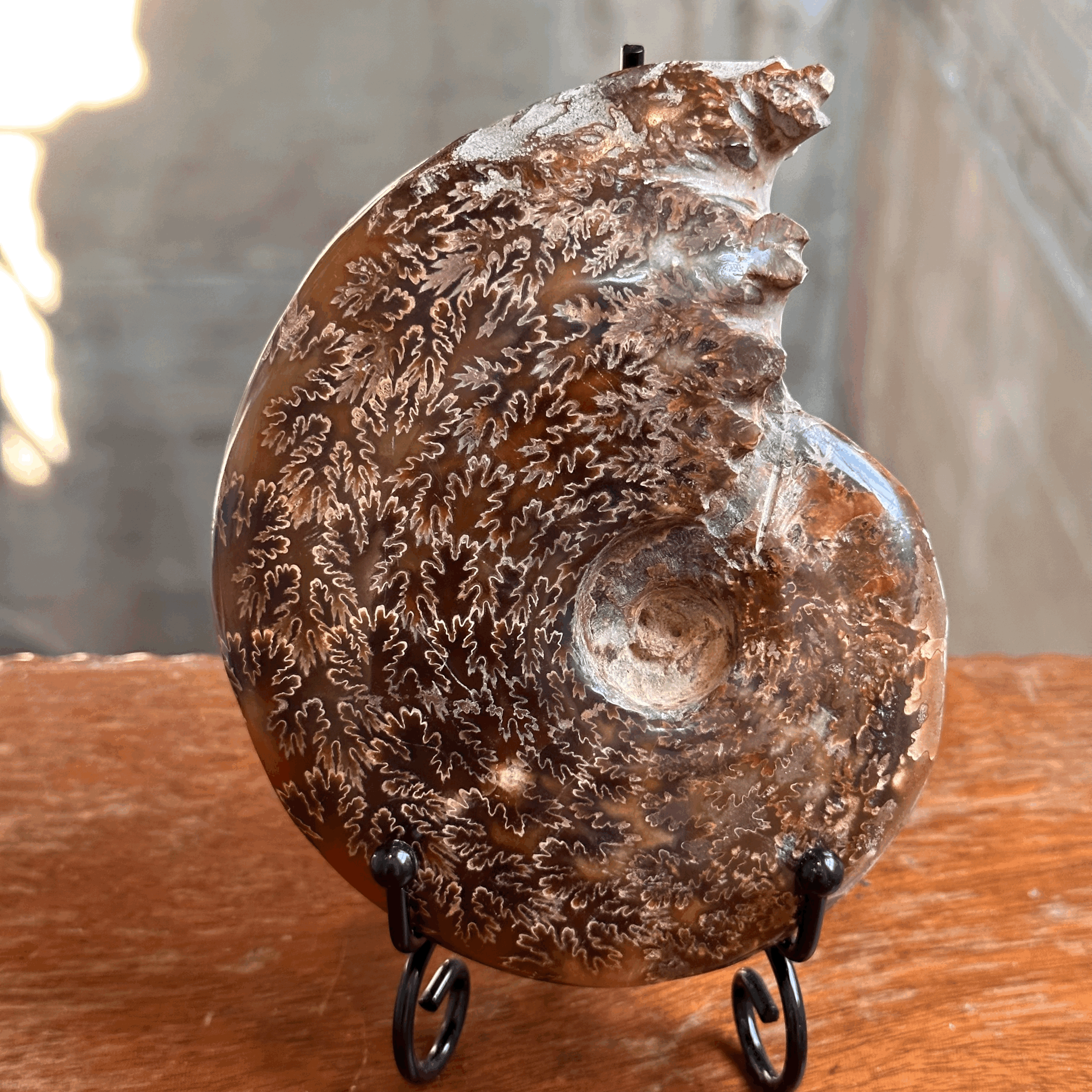
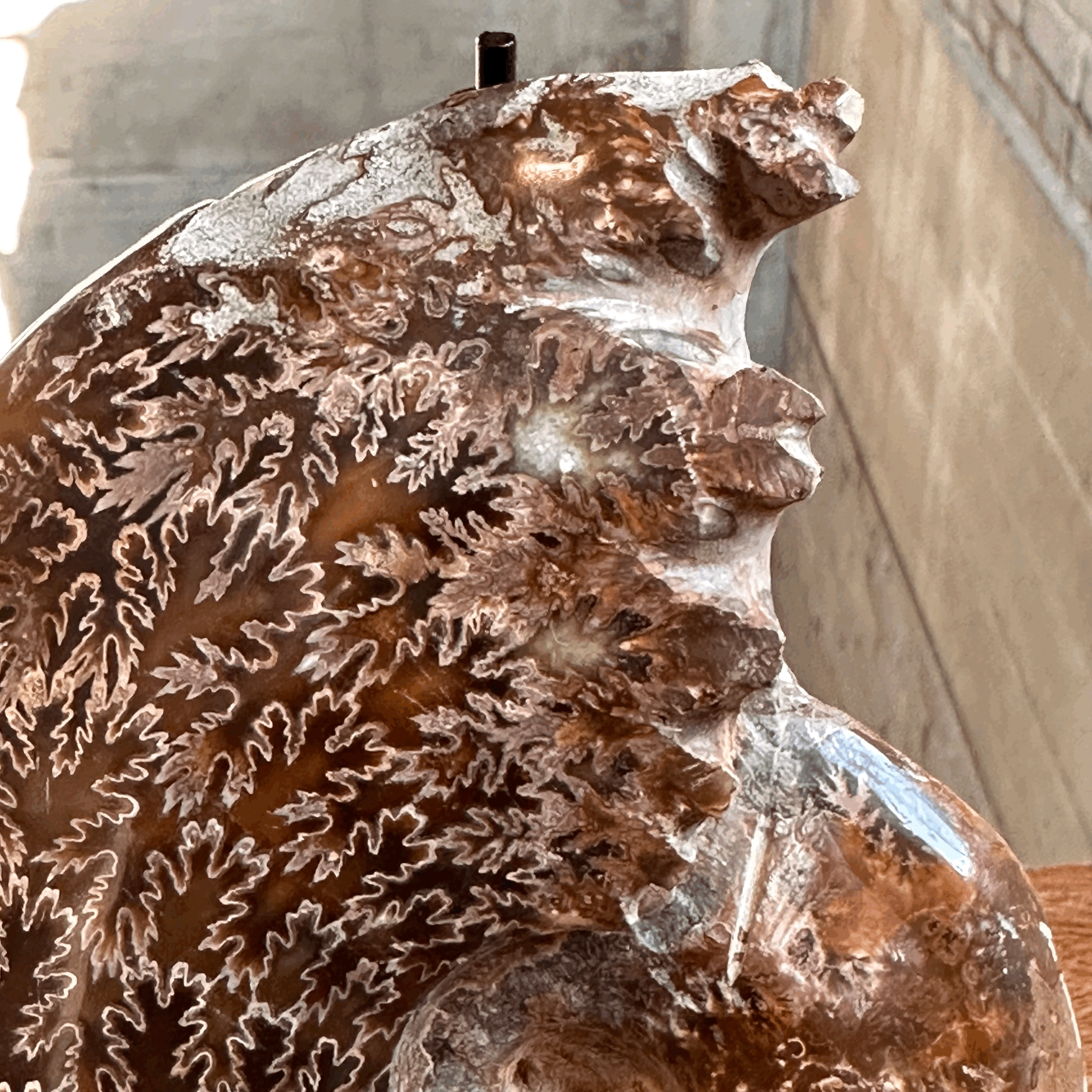

whole Ammonite Fossil with End Chamber, "oak leaf" septa. roughly 5"x5.5"
Beautiful ammonite fossil specimen to display in your collection or as a gift for someone who really digs old stuff.
I’ve taken photos in both sun and shade so you can see how the lighting will affect the colours of this piece. When you look close you can see into the layers; similar to a piece of amber, although not as translucent.
Ammonites are extinct marine animals that lived in shells, roughly 260 million to 66 million years ago.
These coil-shelled, many-tentacled mollusks disappeared after the dinosaur-killing asteroid strike, in one of the worst mass extinctions of all time.
Sometimes you see ammonites in their chambered shells, but these ammonites have had their outer shell removed to expose their intricate “oak leaf” suture patterns. Sometimes these are referred to as sutured whole ammonties.
This abstract, wavy leaf pattern is indicative of the Cretaceous Period, while an ammonite of the earlier Permian to Triassic periods would have had a more linear pattern of septa.
Interesting factoid: It is believed that the original discus used by the ancient Greeks in their Olympics was a fossilized ammonite.
Weight: 570 grams (1 lb 4 oz). Size: roughly 5” x 5.5”
This fossil was weathered over millions of years and parts of the body filled with sea sediment and detritus. While is has been polished smooth, there are areas where the pattern is missing. This is natural to fossils and it is not damage.
PS- If you’ve read this far, you deserve to know that THIS piece is extra special because at the base of the coil- near the end chamber- a little bit of shell escaped removal and has turned into rainbow ammolite! I can’t catch it on camera but you will know it where you see it. Every movement in the sun shines a different colour flash of the rainbow. It is quite lovely (and collectible)!
Beautiful ammonite fossil specimen to display in your collection or as a gift for someone who really digs old stuff.
I’ve taken photos in both sun and shade so you can see how the lighting will affect the colours of this piece. When you look close you can see into the layers; similar to a piece of amber, although not as translucent.
Ammonites are extinct marine animals that lived in shells, roughly 260 million to 66 million years ago.
These coil-shelled, many-tentacled mollusks disappeared after the dinosaur-killing asteroid strike, in one of the worst mass extinctions of all time.
Sometimes you see ammonites in their chambered shells, but these ammonites have had their outer shell removed to expose their intricate “oak leaf” suture patterns. Sometimes these are referred to as sutured whole ammonties.
This abstract, wavy leaf pattern is indicative of the Cretaceous Period, while an ammonite of the earlier Permian to Triassic periods would have had a more linear pattern of septa.
Interesting factoid: It is believed that the original discus used by the ancient Greeks in their Olympics was a fossilized ammonite.
Weight: 570 grams (1 lb 4 oz). Size: roughly 5” x 5.5”
This fossil was weathered over millions of years and parts of the body filled with sea sediment and detritus. While is has been polished smooth, there are areas where the pattern is missing. This is natural to fossils and it is not damage.
PS- If you’ve read this far, you deserve to know that THIS piece is extra special because at the base of the coil- near the end chamber- a little bit of shell escaped removal and has turned into rainbow ammolite! I can’t catch it on camera but you will know it where you see it. Every movement in the sun shines a different colour flash of the rainbow. It is quite lovely (and collectible)!








